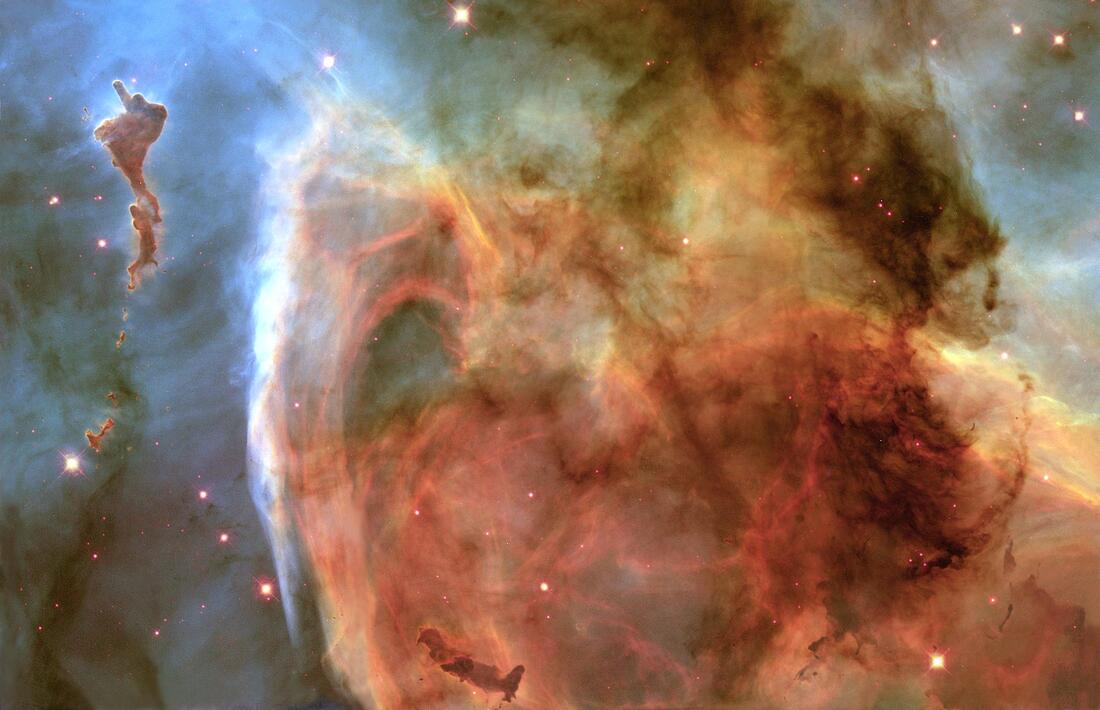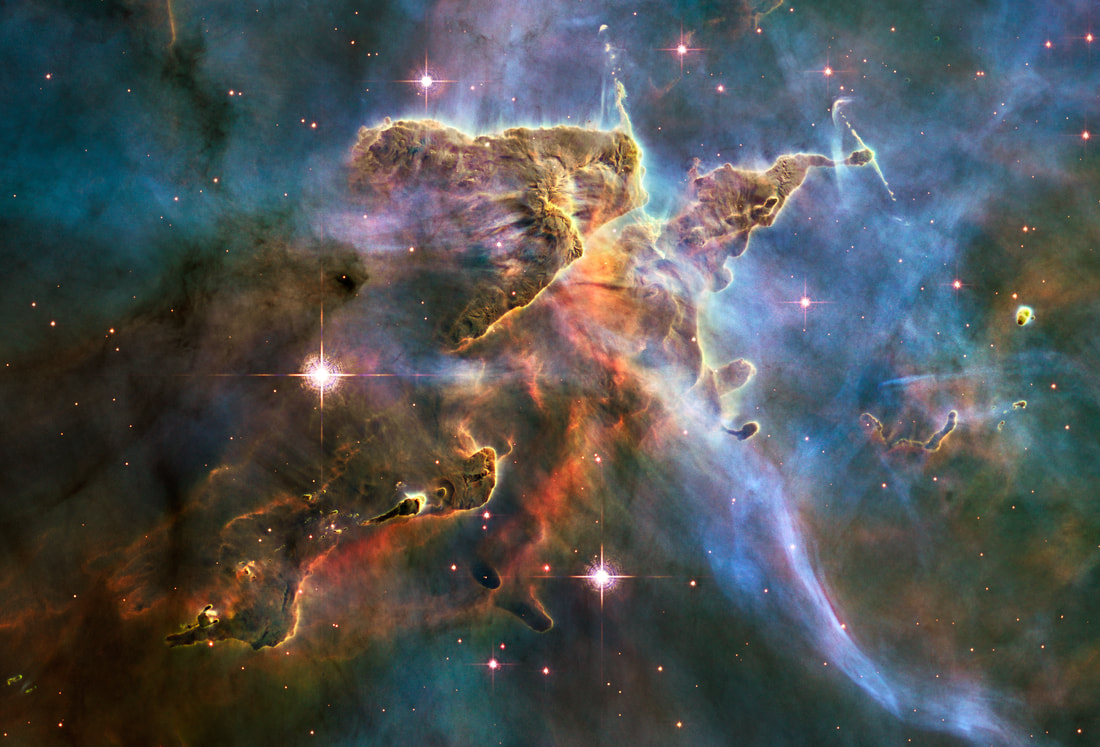|
By Amber C. Snider Does light have consciousness? As one of the most enigmatic and perplexing forces in the universe, the nature of light continues to baffle scientists and spiritual seekers alike. Scientists, theologians, philosophers, astronomers, and healers alike have been fascinated by the power of light. In the quantum universe (that is, the subatomic level), scientists still don’t quite understand how light works –– Is it a particle? A wave? Both? On the quantum level, light changes its behavior depending on whether or not it is being observed. It’s a baffling discovery, one that has disturbed some of the greatest minds of our history, including Albert Einstein. If light can change its behavior whether or not we’re looking at it, we have to wonder: Does light have consciousness? Now imagine the birth of the universe in the Big Bang. Consider the intense, life producing light that was emitted, propelling life itself into being. For many spiritual practitioners, science is not contradictory to what we call ‘magic’ –– magic is simply misunderstood or undiscovered science. In fact, science, especially quantum physics, reveals just how magical and mystifying the world really is. And there are many, many ways to uncover that magic. Just as the mystic 13th century Persian poet Rumi once said, “There are as many paths to God as there are souls on earth.” Light connects all of life on earth. Our central star, the Sun, radiates light that has made all physical life on this planet possible. Encouraging the grass to grow, the vegetables and grain; everything we consume – the food we eat –– was made possible, either directly or indirectly, through the power of the sun. Without its light, nothing would grow; we would cease to be. In Buddhism, luminosity (light) is associated with the Buddha-nature, which is one of compassion and enlightenment. In meditation we can get closer to this spiritual understanding of unity in all things and our own divine nature. Light, most spiritual masters have observed, is the ultimate reality. Light is knowledge. In Neo-Paganism, nature itself is magical, divine, and interconnected. Neo-pagans use tools to visualize and manifest energy, often with light as a central focus. One of the tools of energy manifestation (or spellwork) is candle magic. At the center of this practice, the element of fire, as presented by a tiny flame, is representative of our will, our spiritual intention, which is sent into the air to become manifest in the universe. Since light also contains and holds all the colors of the rainbow, visualizing light (using color meditations) can have a profoundly healing effect on the body, spirit, and mind. We see an emphasis of light in nearly every world religion and spiritual tradition. In Christianity, Jesus refers to himself as the “Light of the world” (John 3:18) and the Gnostic Gospels are also riddled with parables about light. The Gnostic Gospels, or the 52 codices/texts discovered in Nag Hammadi, were never included in the Christian Canon because they didn’t quite “fit” the dogma or doctrine of the Roman Church at the time. Gnosis originates from the Greek word for knowledge, and these texts emphasize spiritual knowledge rather than focusing on humans as separated from God or nature by sin. If humans are connected to each other, each a part of the whole of the divine, and there is unity in all of nature, what exactly connects us? Is it light? In the Gnostic Gospels, light is akin to knowledge, but these texts were esoteric and perhaps intended for only a select few to understand. Just as it is written in the New Testament, “Do not cast your pearls before swine,” the Gospel of Thomas proclaims something very similar: “Jesus said, ‘I disclose my mysteries to those [who are worthy] of [my] mysteries’ ” (62). The ancient texts, written around the 2nd century AD, were encoded as symbols and the teachings centered around enlightenment or light –– not the fault of man through so-called sin. In the Gospel of Thomas, “Jesus said, ‘If they say to you, 'Where have you come from?' say to them, 'We have come from the light, from the place where the light came into being by itself, established [itself], and appeared in their image' ” (50). And again, “I am the light that is over all things. I am all: from me all came forth, and to me all attained. Split a piece of wood; I am there. Lift up the stone, and you will find me there” (77). The Upanishads, part of the sacred texts in the Vedic tradition that shaped Hinduism, also refer to the light. Atman, or the soul, is light; it’s part of the Supreme Soul (Brahma). Light is part of the “Infinite Reality” and our soul journey is one of awakening to that knowledge. Like the Gnostic Gospels, light equals spiritual awareness. Diwali, the religious holiday called The Festival of Lights, is essentially a celebration of this light and its triumph or victory over darkness. In Greek mythology, Hestia (or Vesta in Roman mythology) is the Goddess of the hearth. She was the firstborn child of Cronus and Rhea, both Titans. She is the silent Virgin figure that tends to the firelight between both worlds. Light, or the undying eternal flame, is her domain. She carefully, patiently tends to the fire and she can be seen as embodiment of meditation, the keeper of secret knowledge. Near Death Experiences (NDEs) have been studied by numerous doctors and researchers in recent years, most notably, perhaps by Dr. Raymond Moody. He reported that most (if not all) patients returning from death claim to see a light at the end of a tunnel or being drawn into an all-encompassing, compassionate, calming light. They each describe this light as the most loving force they’ve ever encountered. Upon returning to their earthly bodies, after crossing over to the Other Side, nearly all NDE survivors report some kind of experience with light. NDEs, and the phenomena they produce, are so widely reported that prestigious universities and scientists have taken notice. University of Virginia’s Division of Perceptual Studies, for instance, is devoted to examining the mysteries of NDEs and the possibility of reincarnation of the soul. The power of light resides within us all. It’s one of the most mysterious, yet necessary forces in the universe. What does it mean to be conscious? What does it mean to be human? Perhaps, it has something to do with light. And who knows what lies just beyond that light? Want more stories on the mystical power of nature? Read about magical workings with rivers, streams, and cenotes here.
3 Comments
9/18/2022 12:41:15 am
The slice of your chart where the ascendant appears is also called the first house.
Reply
9/18/2022 12:42:18 am
Look for a little number 1 down near the middle of the chart in the ascendant wedge.
Reply
9/18/2022 12:44:23 am
If you’re looking at a table, you can find the same moon symbol in the second row of the table on the left under the section titled "Planet Positions, Ascendant, & Houses."
Reply
Leave a Reply. |
Archives
April 2024
MastheadPublisher Categories |


 RSS Feed
RSS Feed